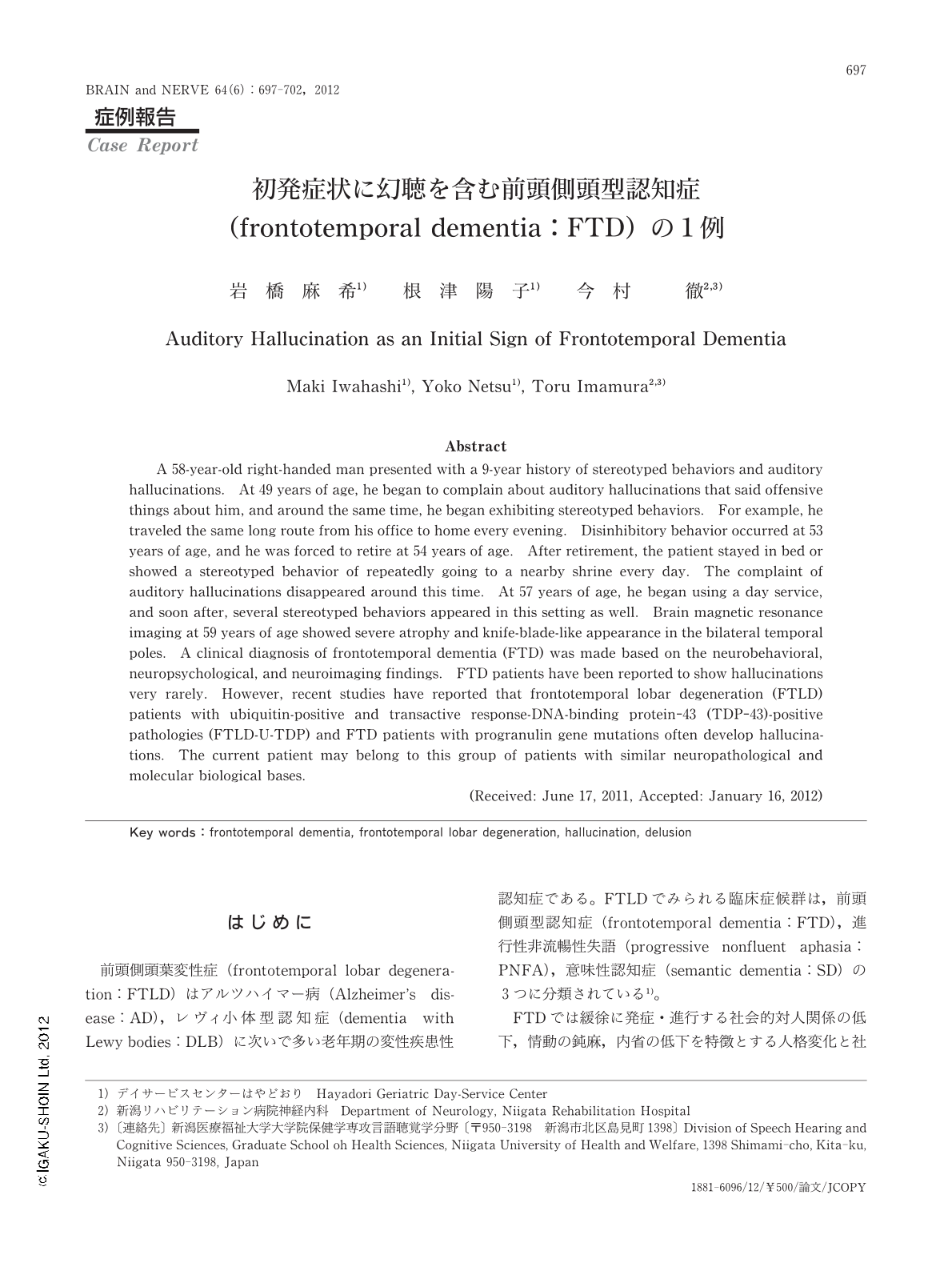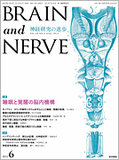Japanese
English
- 有料閲覧
- Abstract 文献概要
- 1ページ目 Look Inside
- 参考文献 Reference
はじめに
前頭側頭葉変性症(frontotemporal lobar degeneration:FTLD)はアルツハイマー病(Alzheimer's disease:AD),レヴィ小体型認知症(dementia with Lewy bodies:DLB)に次いで多い老年期の変性疾患性認知症である。FTLDでみられる臨床症候群は,前頭側頭型認知症(frontotemporal dementia:FTD),進行性非流暢性失語(progressive nonfluent aphasia:PNFA),意味性認知症(semantic dementia:SD)の3つに分類されている1)。
FTDでは緩徐に発症・進行する社会的対人関係の低下,情動の鈍麻,内省の低下を特徴とする人格変化と社会的接触性の障害を中心とし,清潔保持,衛生管理の障害,思考の柔軟性の消失,注意の転導性亢進,食行動変化,保続的・常同的行動,利用行動などが認められる1,2)。一方,神経精神症状としての妄想は一部の症例でのみみられ,幻覚は極めて少ないとされている2-9)。
今回われわれは,典型的な臨床像,経過と頭部MRI所見を有するが,初発症状に幻聴が含まれていた点が非典型的であったFTDの1例を経験したので報告する。
Abstract
A 58-year-old right-handed man presented with a 9-year history of stereotyped behaviors and auditory hallucinations. At 49 years of age, he began to complain about auditory hallucinations that said offensive things about him, and around the same time, he began exhibiting stereotyped behaviors. For example, he traveled the same long route from his office to home every evening. Disinhibitory behavior occurred at 53 years of age, and he was forced to retire at 54 years of age. After retirement, the patient stayed in bed or showed a stereotyped behavior of repeatedly going to a nearby shrine every day. The complaint of auditory hallucinations disappeared around this time. At 57 years of age, he began using a day service, and soon after, several stereotyped behaviors appeared in this setting as well. Brain magnetic resonance imaging at 59 years of age showed severe atrophy and knife-blade-like appearance in the bilateral temporal poles. A clinical diagnosis of frontotemporal dementia (FTD) was made based on the neurobehavioral, neuropsychological, and neuroimaging findings. FTD patients have been reported to show hallucinations very rarely. However, recent studies have reported that frontotemporal lobar degeneration (FTLD) patients with ubiquitin-positive and transactive response-DNA-binding protein-43 (TDP-43)-positive pathologies (FTLD-U-TDP) and FTD patients with progranulin gene mutations often develop hallucinations. The current patient may belong to this group of patients with similar neuropathological and molecular biological bases.
(Received: June 17,2011,Accepted: January 16,2012)

Copyright © 2012, Igaku-Shoin Ltd. All rights reserved.


